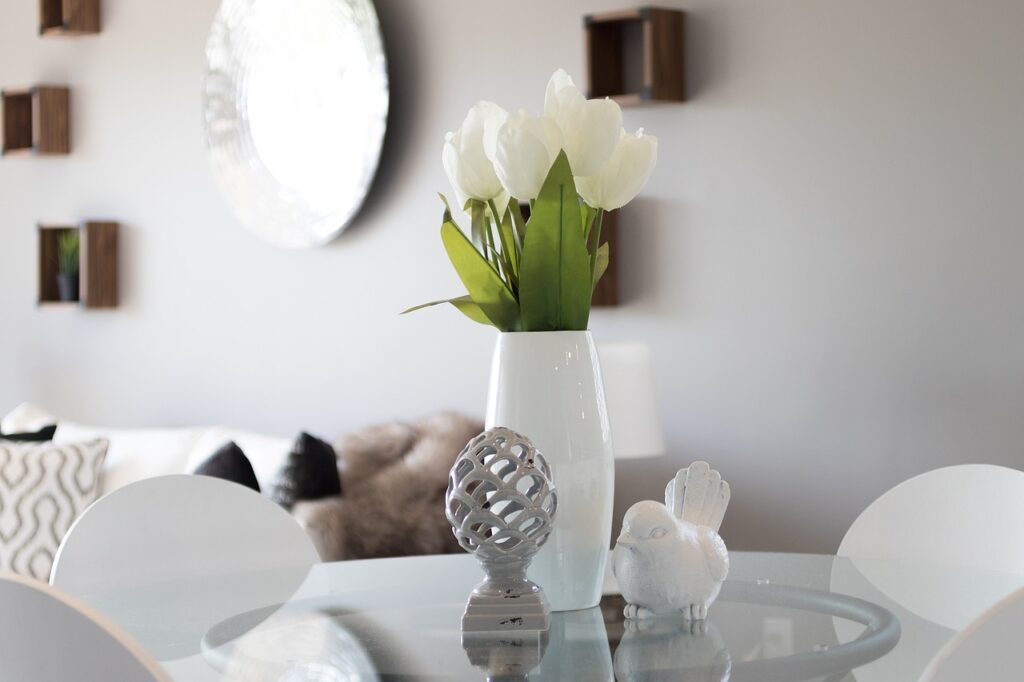Staging a home for sale is an art and a science that can significantly impact how quickly and profitably your property sells. In today’s competitive real estate market, keeping up with staging trends and understanding buyer preferences can make all the difference. Here are some tips for staging your home, complemented by insights into current real estate trends.
1. Declutter and Depersonalize
Start by decluttering every room. Remove personal items such as family photos, collectibles, and any unnecessary furniture. The goal is to create a clean, open space that allows potential buyers to envision themselves living there.
Minimalism continues to be a popular trend. Buyers are attracted to spaces that feel modern, simple, and functional. By decluttering, you not only make your home look larger and more appealing but also align with the minimalist trend.
2. Neutralize Color Schemes
Opt for neutral colors on the walls and floors. Shades like beige, gray, and soft whites create a blank canvas that appeals to a wide range of buyers. If you need a pop of color, use it sparingly through accessories like pillows or artwork.
The use of neutral tones is a trend that persists because it helps buyers imagine how they would personalize the space. Neutral colors also photograph well, which is crucial in the age of online listings where first impressions are often made through photos.
3. Enhance Curb Appeal
First impressions matter. Make sure the exterior of your home is inviting. This includes maintaining the lawn, trimming bushes, cleaning walkways, and possibly adding potted plants or flowers near the entrance.
Eco-friendly landscaping is gaining popularity. Consider incorporating drought-resistant plants or a small vegetable garden. These eco-conscious choices can appeal to buyers who are interested in sustainability and reducing their environmental footprint.
4. Modernize Key Areas
Focus on the kitchen and bathrooms, as these are often the deciding factors for buyers. Update hardware, fixtures, and, if possible, appliances. Even small changes like new faucets or a fresh coat of paint on cabinets can make a big difference.
Smart home features are increasingly sought after. Integrating technology like smart thermostats, lighting, and security systems can make your home more attractive to tech-savvy buyers.
5. Light and Bright
Ensure your home is well-lit. Open curtains and blinds to let in natural light and add lamps if necessary. Consider updating light fixtures to more modern designs.
6. Furniture Arrangement
Arrange furniture to highlight the flow of each room. Remove any pieces that make a space feel cramped. If necessary, rent furniture to create an inviting and cohesive look.
Flexible living spaces are in demand. Highlight how rooms can serve multiple purposes, such as a guest room that doubles as an office. Multifunctional furniture is a trend that supports this idea and can be showcased during staging.
7. Highlight Outdoor Living
Make the most of any outdoor spaces by staging them with inviting furniture and decor. Show potential buyers how they can utilize patios, balconies, or backyards for entertaining and relaxation.
Outdoor living spaces have become more valuable, especially post-pandemic. Buyers look for homes with comfortable and functional outdoor areas. Consider adding features like a fire pit, outdoor seating, or even a small garden to enhance appeal.
8. Pay Attention to Details
Small touches can make a big impact. Fresh flowers, a bowl of fruit, or a few strategically placed books can add warmth and make your home feel lived-in without being cluttered.
Staging your home effectively requires a mix of traditional strategies and awareness of current trends. By creating a clean, neutral, and inviting space, you can attract a broader range of potential buyers. Stay informed about what buyers are looking for and adapt your staging efforts to meet these preferences. Remember, the goal is to help buyers see themselves in your space, envisioning it as their future home.


